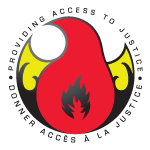By Lyndon George
Within most traditional Native American cultures, the drum is the primary musical instrument. It serves many purposes within the areas of justice, entertainment and healing. The drum is used at most traditional native ceremonies including powwows and other prominent festivities.
Through any court proceedings, healing circles or other traditional ways of restorative justice, the drum and songs are used to support and give strength to the individual and the families. Drums are a part of traditional cultural practice to restore harmony to the community. The drum and songs are also typically combined with traditional use of medicines.
Knowledge leads to harmony
The making of the drum, how it is played and the function it serves varies from one native community to the other. But the hands-on experience of creating a drum always involves a process of learning to respect where the materials of the drum have come from, and our connection spiritually with everything.
I was very pleased to welcome participants from Legal Aid Ontario, as well as members of the public, to my hand drum-making workshop last fall.
For Legal Aid Ontario staff who work with Aboriginal clients, attending workshops to learn cultural traditions like drum-making gives them hands-on knowledge of the importance of spirituality for Aboriginal people. Through the experience of learning to create their own hand drums, staff members were opened to this healing and essential knowledge that will equip them to work in harmony with Aboriginal people. I am pleased to be able to offer these workshops. They give everyone in our community the chance to have this form of experience. It is difficult to come by it otherwise.
The heartbeat of the Earth
Within most traditional communities, the beat of the drum represents the heartbeat of the earth and serves to remind people of their connection to the earth and all that is within and around it. The drum often serves as a medium to bring all life into balance with one another.
It is not known when the drum first became a part of Native American culture, but the drum as a part of ritual, ceremony and daily life is extremely important.
Many drums for many purposes
There are many types of drums and each type of drum may serve a different purpose.
In October 2014, members of the Hamilton Community Legal Clinic, Legal Aid Ontario and a few others participated in the making of their own hand drums. The hand drum is usually a hoop drum and has a head of rawhide from one animal or another. In this case, the rawhide was that from sheep.
The hand/hoop drum is typically anywhere from 7 inches (17.78 cm) to 28 inches (71.12 cm) wide and the head of the drum might be decorated with various symbols, signs or colours that reflect or tell a story of the individual using the drum.
These drums are played by people in times of festivals, events, ceremonies or to call upon others to come together. In most designs, these drums are held by a rawhide handle on the lacing at the back of the drum and either played with the palm of the hand or with a beater.
The Awakening Ceremony
In 2015, the makers of the drums will be called back together and will bring their drums. A celebration will take place which will include a feast. This will be the Awakening Ceremony of the drum. The makers of the drums will learn, once more, of their responsibility as a drum keeper.
The drums, according to Aboriginal culture, are gifts from the Creator that we accept as caretakers.
Please note: Native American is the preferred cultural identification of some southern communities as they do not refer to themselves as First Nation
Lyndon George is leader of the YÉN:TENE (you and I will go there together) initiative at the Hamilton Community Legal Clinic. In collaboration with local Aboriginal agencies and networks, the Hamilton Community Legal Clinic is committed to providing culturally respectful and appropriate legal services to Aboriginal clients. The main purpose of YÉN:TENE is to improve access to justice for Aboriginal people in Hamilton and its surrounding communities. Lyndon is an Ojibway member of the Kettle and Stoney Point First Nations.
 Aboriginal Justice Strategy
Aboriginal Justice Strategy